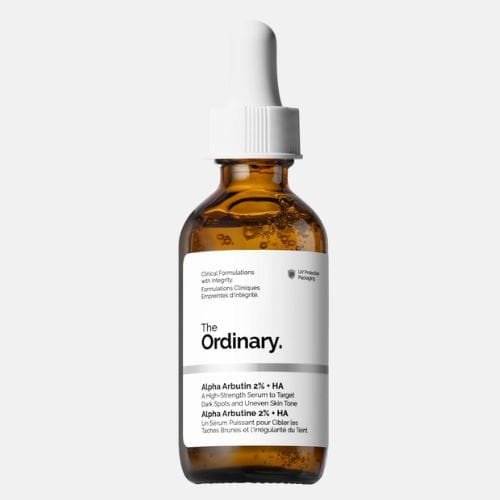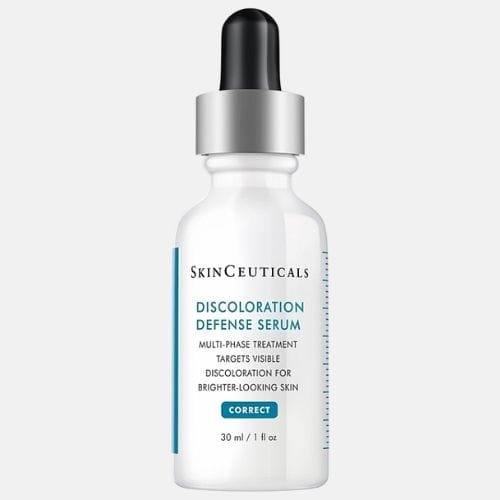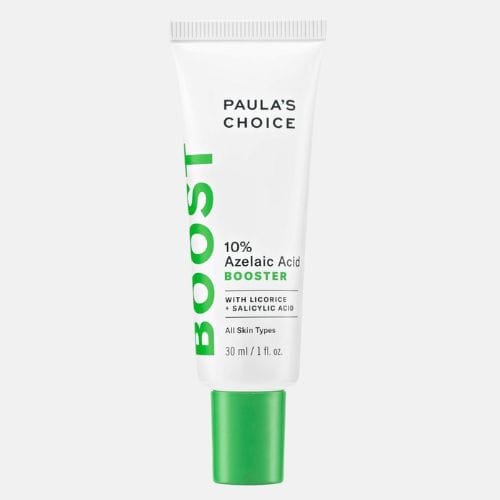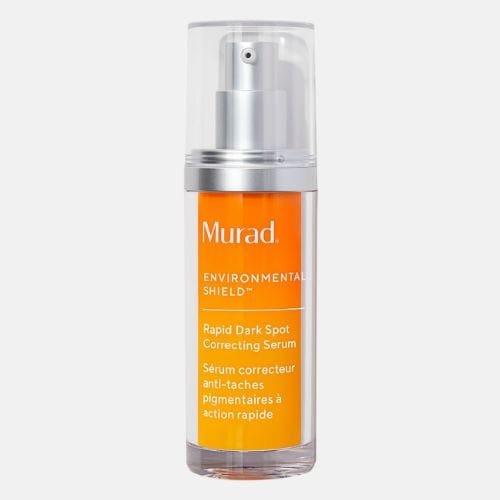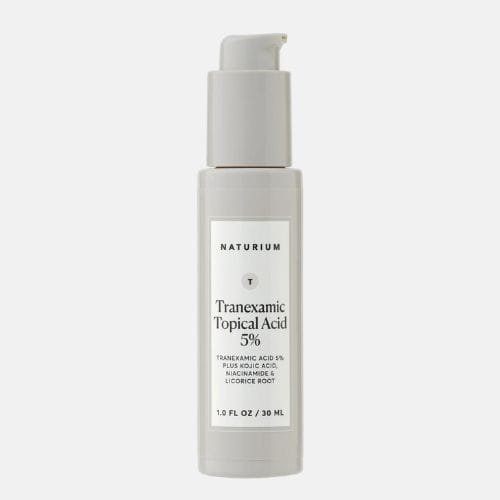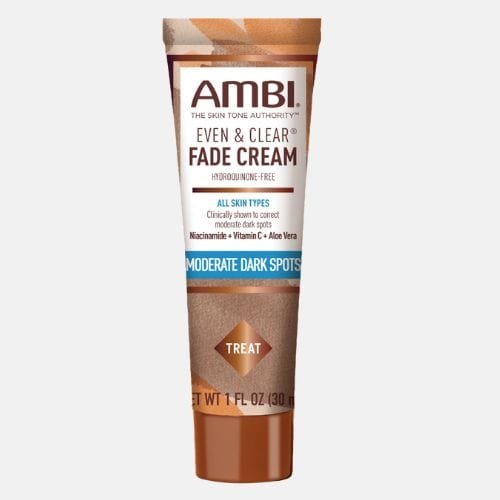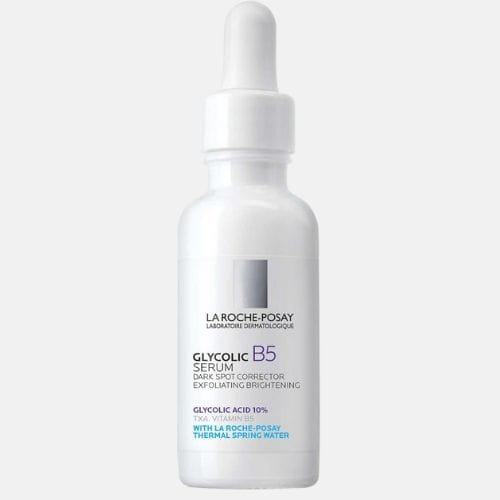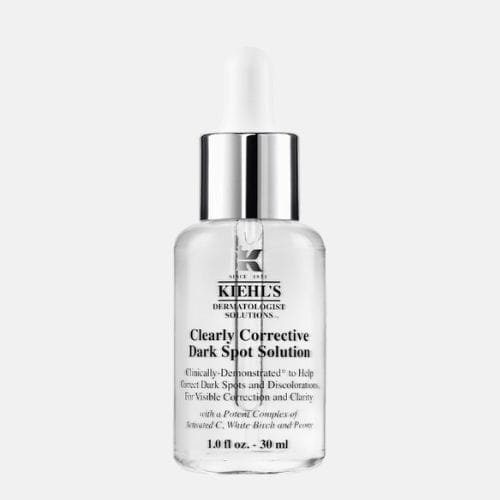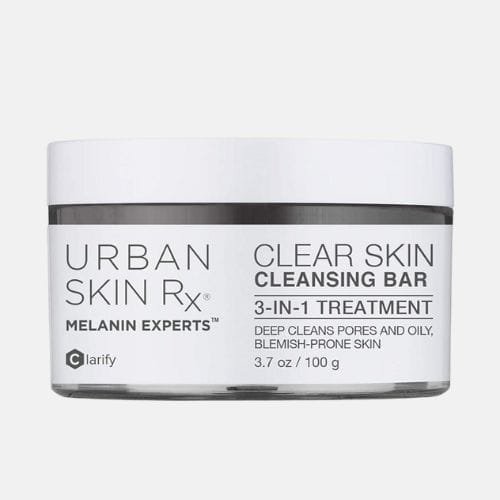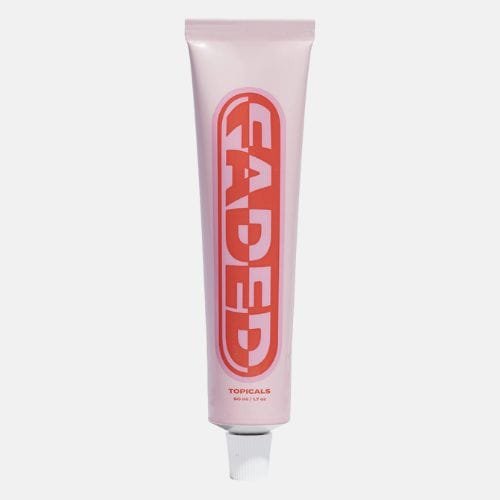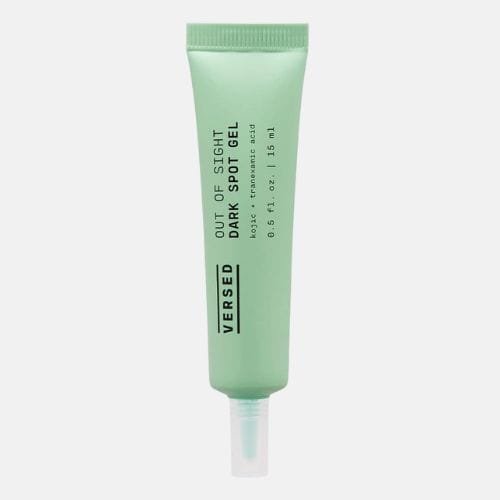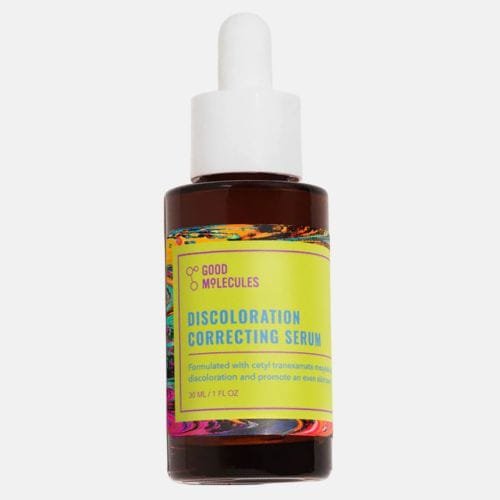12 Best Skincare Products for Hyperpigmentation That Actually Work
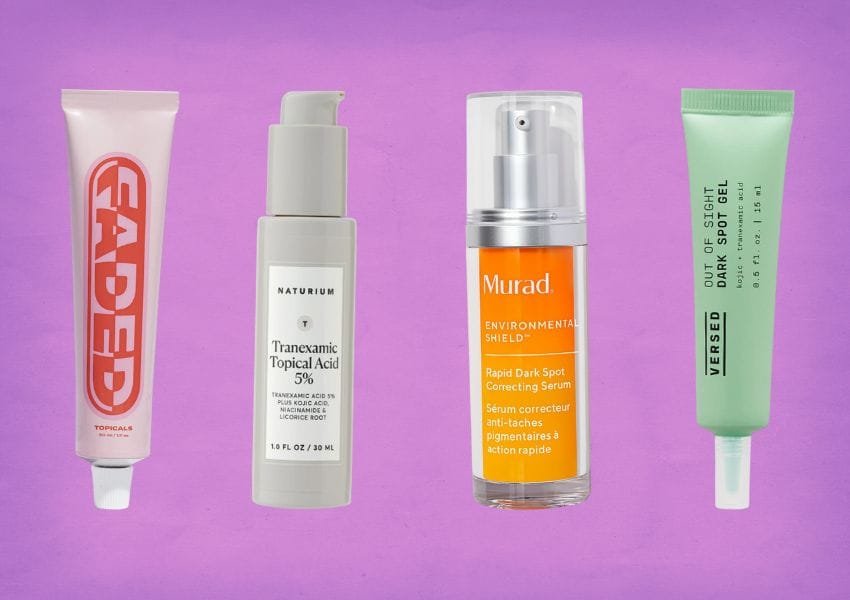
I’ll admit it—when it comes to dealing with hyperpigmentation, I’ve tried it all. From brightening serums to spot-correcting creams to TikTok-recommended toners that claim to erase dark marks overnight. (Spoiler alert: most of them didn’t.) But after a little patience, a lot of patch-testing, and some trial-and-error, I’ve found a handful of skincare products that genuinely deliver on their promise to fade those stubborn dark spots.
Whether your hyperpigmentation is from acne scars, sun damage, or just general uneven tone, these twelve products have made a real difference in my routine. They’re not just hype—they’re backed by science, loved by derms, and adored by people with skin like mine who’ve seen real results.
So if you’re ready to brighten things up (without spending your entire paycheck), here are the twelve best skincare products for hyperpigmentation to try now.
Best Picks
1. The Ordinary Alpha Arbutin 2% + HA
Let’s kick things off with a cult favorite that’s actually worth the hype. The Ordinary’s Alpha Arbutin 2% + HA serum is one of the most affordable yet effective treatments I’ve used for fading dark spots and brightening dull patches.
Why it works:
Alpha arbutin is a gentle, plant-derived skin brightener that slows down melanin production. Translation? Fewer dark marks over time. It’s paired with hyaluronic acid to help your skin stay plump and hydrated—because let’s be honest, nobody wants a bright patch of skin that’s also dry and flaky.
How to use it:
I like to apply this serum after cleansing and before moisturizing, both morning and night. Just a few drops go a long way. And yes, consistency really is key here—give it a few weeks, and you’ll start to notice those post-acne spots fading like magic.
2. Skinceuticals Discoloration Defense
Okay, this one’s a bit of a splurge—but if you’ve got some extra skincare budget and want fast, visible results, Skinceuticals Discoloration Defense is worth every penny.
After about four weeks of use, I noticed a major reduction in the intensity of my melasma patches. Not gone completely—but significantly improved. If you’re dealing with deeper or more hormonal pigmentation, this one’s for you.
Why it works:
This serum combines 3% tranexamic acid (a gold-standard ingredient for pigmentation), 1% kojic acid, 5% niacinamide, and 5% HEPES (a gentle exfoliator). Together, they tackle stubborn pigmentation head-on, helping even out tone and prevent future discoloration.
How to use it:
Twice daily, on clean skin. I especially love using this in the morning under sunscreen, because it helps protect against the formation of new dark spots caused by sun exposure.
3. Paula’s Choice 10% Azelaic Acid Booster
You know how some products just become your go-to ride-or-die over time? That’s me with Paula’s Choice Azelaic Acid Booster. I always keep it in my rotation, especially when my skin’s acting up.
Why it works:
Azelaic acid is a multi-tasking miracle—anti-inflammatory, anti-bacterial, and brightening all at once. It works by gently inhibiting melanin production and calming irritated skin, making it a perfect choice if you’re dealing with redness or post-inflammatory hyperpigmentation from acne.
How to use it:
You can use this on its own or mixed into your moisturizer. I personally like applying it directly to problem areas at night. It plays well with most other ingredients, though I tend to skip retinol on nights when I use this (just to keep things gentle).
4. Murad Rapid Dark Spot Correcting Serum
If you’re someone who wants to see quick results (same), Murad’s Rapid Dark Spot Correcting Serum might just be your new holy grail. It’s powerful, but not harsh—basically the skincare equivalent of tough love.
The texture is silky and absorbs fast, so it never pills under makeup or sunscreen. And yes, it’s pricey—but one bottle lasted me almost three months, which makes the cost-per-use totally reasonable.
Why it works:
This serum features a patented resorcinol technology, niacinamide, and tranexamic acid—all of which target uneven pigmentation while strengthening your skin barrier. It also contains glycolic acid to gently exfoliate and accelerate cell turnover, meaning new, brighter skin can emerge faster.
How to use it:
Start slow, especially if you’re new to acids. I began with every other night, then worked my way up to daily use. Always follow up with a rich moisturizer and, of course, SPF in the morning.
5. Naturium Tranexamic Topical Acid 5%
Let me just say this: Naturium is seriously underrated. Their formulas are elegant, affordable, and effective—and their Tranexamic Topical Acid 5% is no exception.
Why it works:
With a blend of tranexamic acid, kojic acid, niacinamide, and acetyl glucosamine, this serum brightens pigmentation without irritation. It’s fragrance-free, non-comedogenic, and designed for all skin types (yes, even the super sensitive ones).
How to use it:
I like using this one at night, right after cleansing. It’s lightweight and layers well with other serums and creams. You can even pair it with a hydrating essence if your skin’s feeling extra thirsty.
6. Ambi Skincare Fade Cream
Sometimes, the old-school stuff still works—and Ambi’s Fade Cream is a tried-and-true staple for fading dark marks. Hydroquinone isn’t for everyone, but when used correctly, it can be incredibly effective for deep, long-standing hyperpigmentation.
Why it works:
Hydroquinone targets the enzyme responsible for melanin production, making it one of the most powerful ingredients for treating dark spots. This formula also includes alpha hydroxy acids (AHAs) to help with exfoliation and absorption.
How to use it:
Use only a pea-sized amount, and only on affected areas. I personally like cycling this in for a few weeks at a time, then taking a break to avoid overuse. Always wear sunscreen when using hydroquinone—it makes your skin more sensitive to UV, and you don’t want to undo all that hard work.
7. La Roche-Posay Glycolic B5 Dark Spot Corrector
Looking for something that gently exfoliates and targets dark spots without overwhelming your skin? La Roche-Posay’s Glycolic B5 Dark Spot Corrector is the kind of multitasker that quietly does it all. It’s a solid pick if you’re new to acids or want a derm-approved formula that’s both effective and easy to tolerate.
Why it works:
This serum stars 10% glycolic acid, a gentle exfoliator that helps fade surface-level pigmentation and smooth uneven skin tone. It’s also packed with vitamin B5 (panthenol) to hydrate and soothe, along with tranexamic acid, which helps tackle deeper discoloration and post-acne marks.
How to use it:
Apply at night after cleansing—2–3 times a week if you’re just getting started, or daily if your skin’s already used to exfoliants. Always follow up with a nourishing moisturizer and never forget sunscreen the next morning.
8. Kiehl’s Clearly Corrective Dark Spot Solution
One word: gentle. Kiehl’s Clearly Corrective Dark Spot Solution is one of those serums that just works quietly in the background, improving skin tone day by day without any fuss or irritation.
Why it works:
This serum is formulated with activated vitamin C (a stabilized form that won’t oxidize on your skin), white birch extract, and peony extract. Together, they brighten the skin, reduce discoloration, and boost radiance without causing dryness or peeling.
How to use it:
Morning and night—yes, vitamin C in the evening is totally fine here. It absorbs quickly and plays nicely with other skincare steps like moisturizers and sunscreen.
9. Urban Skin Rx Even Tone Cleansing Bar
Sometimes your cleanser can do more than just clean—and Urban Skin Rx’s Even Tone Cleansing Bar proves it. It’s a 3-in-1 treatment that’s especially great if you’re dealing with hyperpigmentation on combination or oily skin.
Why it works:
Formulated with kojic acid, azelaic acid, niacinamide, and licorice root, this solid cleanser (which comes with an exfoliating sponge) helps fade dark spots while also keeping breakouts in check.
How to use it:
Wet the sponge, work up a lather, and massage onto your skin for about a minute. You can use it daily or as a treatment 2-3 times a week.
10. Topicals Faded Serum
Okay, if you haven’t heard of Topicals yet, welcome to the cool-kid club. Their Faded Serum is specifically made to treat discoloration—and it’s already a cult favorite for a reason.
Why it works:
It’s a blend of clinically backed ingredients like tranexamic acid, azelaic acid, niacinamide, kojic acid, and licorice root—all working together to even out skin tone, calm inflammation, and fade dark patches.
How to use it:
Apply a thin layer 1-2 times a week at first (this one’s potent), then build up as tolerated. It has a slightly sulfuric smell (just being real here), but the results are so worth it.
11. Versed Out of Sight Dark Spot Gel
If you’re a fan of clean beauty and budget-friendly finds, Versed’s Out of Sight spot treatment is the under-the-radar gem you’ve been waiting for. It’s a targeted solution for those one-off spots that show up and overstay their welcome.
Why it works:
This gel uses tranexamic acid, kojic acid, and licorice root to reduce the look of discoloration while being gentle enough for all skin types. Plus, the tube is super portable and mess-free.
How to use it:
Dab it directly on dark spots once or twice a day. It’s great for treating specific marks instead of applying a full-face serum.
12. Good Molecules Discoloration Correcting Serum
And last (but definitely not least), we’ve got the Good Molecules Discoloration Correcting Serum—the unsung hero of budget-friendly skincare. Don’t let the price tag fool you; this little bottle packs a serious punch.
Why it works:
The star ingredient is 4% niacinamide and cetyl tranexamate mesylate, a stable form of tranexamic acid that works overtime to reduce dark spots, calm inflammation, and promote a more even tone.
How to use it:
Apply it daily under moisturizer, and be consistent. It layers nicely with other serums, and the lightweight texture makes it ideal for both day and night use.
What causes hyperpigmentation in the first place?
Hyperpigmentation happens when your skin produces excess melanin (the pigment responsible for your skin color). This can be triggered by a bunch of things—sun exposure, acne scarring, hormonal changes (like melasma), skin injuries, or inflammation from conditions like eczema. Basically, anytime your skin is irritated or healing, it can lead to discoloration.
UV rays are a major culprit, which is why sunscreen is non-negotiable if you’re trying to fade dark spots. Even if you’re using top-of-the-line brightening serums, you won’t see results unless you’re protecting your skin daily with SPF.
Which ingredients are best for fading hyperpigmentation?
There are several proven ingredients that target discoloration effectively. Here are a few of the most popular (and science-backed):
Vitamin C: Brightens skin tone and helps inhibit melanin production.
Niacinamide (Vitamin B3): Calms inflammation, reduces redness, and evens out tone.
Tranexamic Acid: Great for stubborn melasma and post-inflammatory pigmentation.
Azelaic Acid: A gentle yet powerful brightener, especially good for acne-prone skin.
Alpha Arbutin: A safer alternative to hydroquinone that works slowly but effectively.
Kojic Acid: Derived from mushrooms, helps lighten pigmentation over time.
Hydroquinone: The strongest option, best used short-term and under medical guidance.
Look for products that combine these actives with soothing ingredients to avoid irritation and boost results.
Can I use multiple dark spot treatments together?
Yes—but with caution. Some ingredients pair really well together (like niacinamide + tranexamic acid), while others need to be spaced out (like vitamin C + retinol or AHAs + retinol).
A good rule of thumb:
Use vitamin C in the morning under SPF.
Use exfoliating acids or retinol at night.
Layer gentler ingredients like niacinamide or azelaic acid day or night.
If you’re unsure, try alternating treatments on different days or using spot treatments only on affected areas. Always introduce new products one at a time to track how your skin reacts.
Do I need a prescription for treating hyperpigmentation?
Not always. Many over-the-counter products work wonderfully for mild to moderate pigmentation issues. But if you’ve tried several options with no luck—or you’re dealing with severe melasma, deep scarring, or persistent discoloration—a dermatologist might recommend prescription-strength treatments.
These could include:
Hydroquinone 4% or higher
Tretinoin (retinoid)
Corticosteroid creams
Oral medications (in rare cases)
Professional treatments like chemical peels, lasers, or microneedling
Always consult a dermatologist before jumping into stronger options.
Is it safe to use these products on sensitive skin?
Yes—but not all products are created equal. If your skin is sensitive, it’s best to:
Stick with gentler ingredients like azelaic acid, niacinamide, and alpha arbutin.
Avoid overly harsh combinations (like glycolic acid + retinol).
Patch test new products before applying them all over your face.
Use fragrance-free, non-comedogenic formulas.
And if irritation shows up? Don’t panic—just take a break, focus on repairing your skin barrier with soothing ingredients (like ceramides or squalane), and slowly reintroduce actives once your skin calms down.
